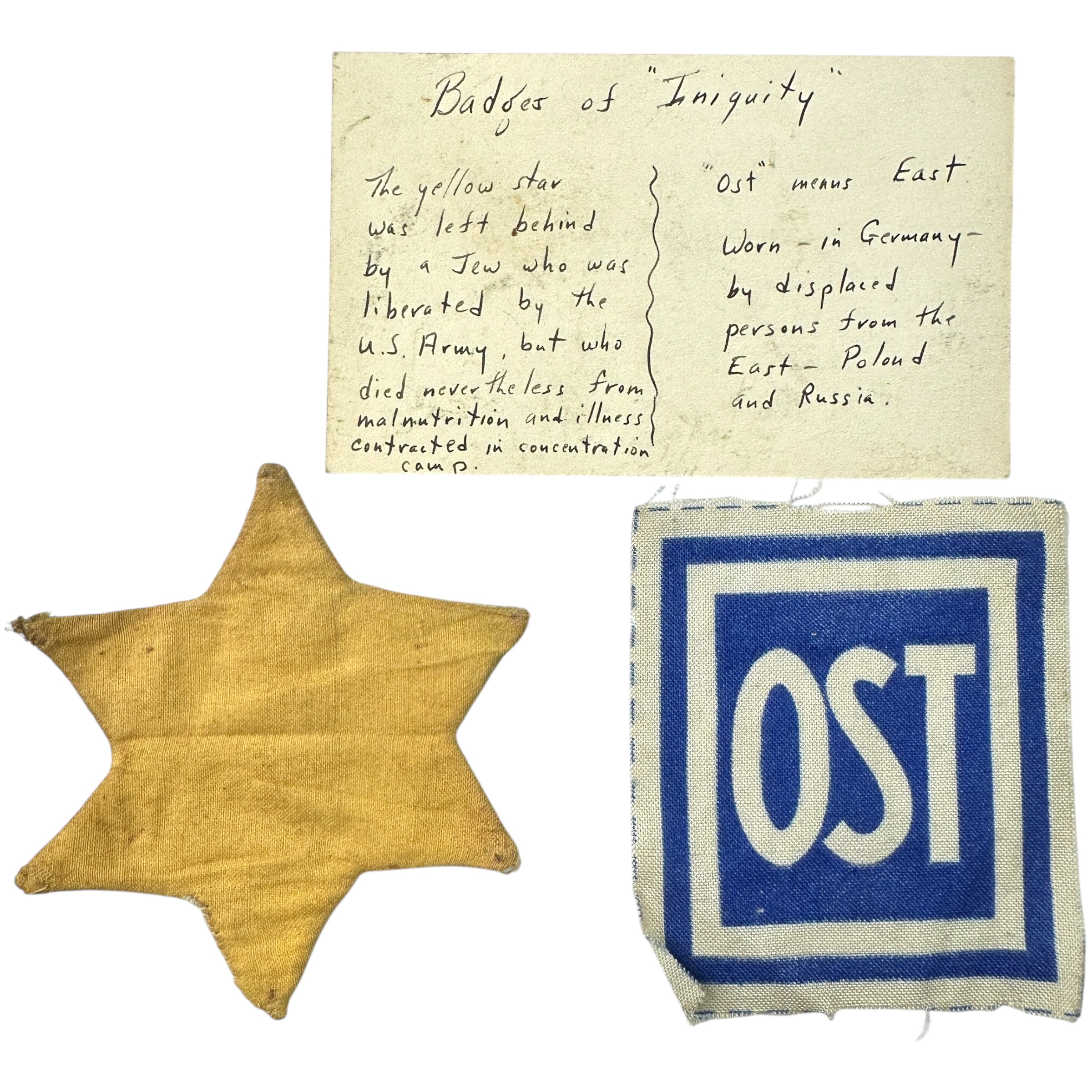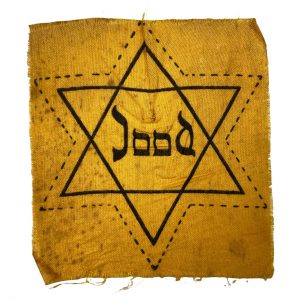Hungarian Star of David
This yellow Jewish star is a poignant symbol of the persecution of Jews in Hungary during the Second World War.
The object is made from coarse woven yellow cotton or linen and shaped as a six-pointed star.
It was cut by hand and shows clear signs of wear: the edges are frayed, the fabric is damaged in places, and the reverse side reveals the uncolored underside of the material.
Notably, it lacks any printed text such as “Jew”, which was common in some countries but not in Hungary.
Following the German occupation of Hungary on March 19, 1944, wearing the yellow star became mandatory on April 5 for all Jews over the age of six.
This measure was intended to make Jewish citizens visible, isolate them from society, and prepare them for deportation.
Persecution of Jews in Hungary during World War II
The persecution of Jews in Hungary was one of the most tragic chapters of the Holocaust.
Until 1944, Hungarian Jews were relatively protected compared to their counterparts in other occupied territories.
Although antisemitic laws had already been introduced before the German occupation such as restrictions on employment, education, and property mass deportations were initially delayed.
This changed abruptly on March 19, 1944, when Nazi Germany occupied Hungary.
In a short time, the country was subjected to the brutal Nazi regime.
The Hungarian authorities, under a pro-German government and with active involvement of the Hungarian gendarmerie, closely collaborated with the SS in identifying, isolating, and deporting the Jewish population.
Between May and July 1944, approximately 437,000 Jews were deported, mostly to the Auschwitz-Birkenau extermination camp.
The vast majority were murdered upon arrival.
In Budapest, which had a large Jewish population, deportations were temporarily delayed due to international pressure, including efforts by diplomats like Raoul Wallenberg, who managed to save thousands of Jews.
After the fascist Arrow Cross Party seized power in October 1944, violence against Jews intensified once again.
Many were executed or forced to go on death marches to Austria.
In the end, only a few hundred thousand Hungarian Jews survived the war.
The persecution of Jews in Hungary is a harrowing example of how, in a very short time and with the organized cooperation of local authorities, an ancient community was nearly wiped out entirely.







